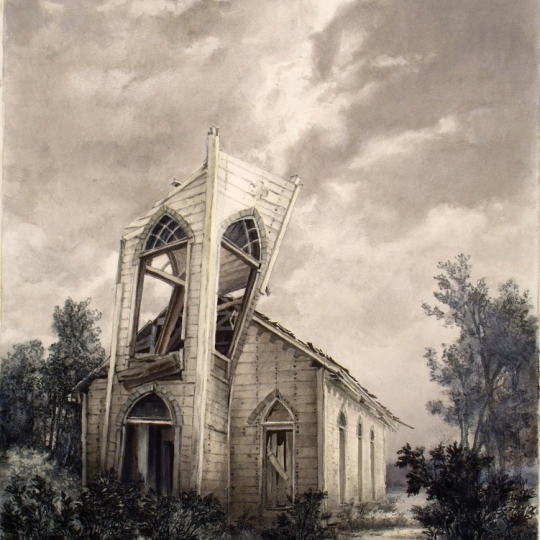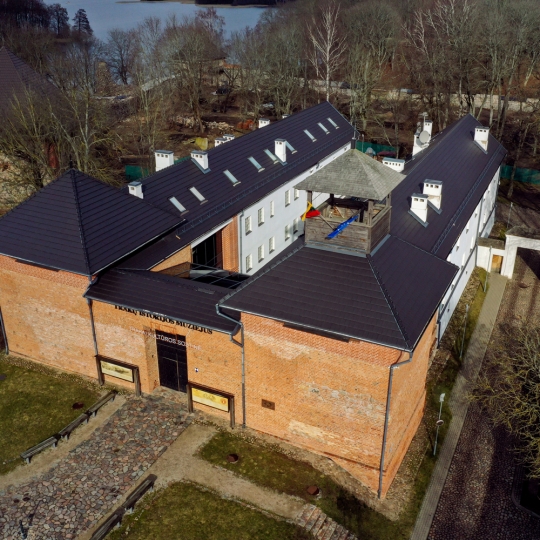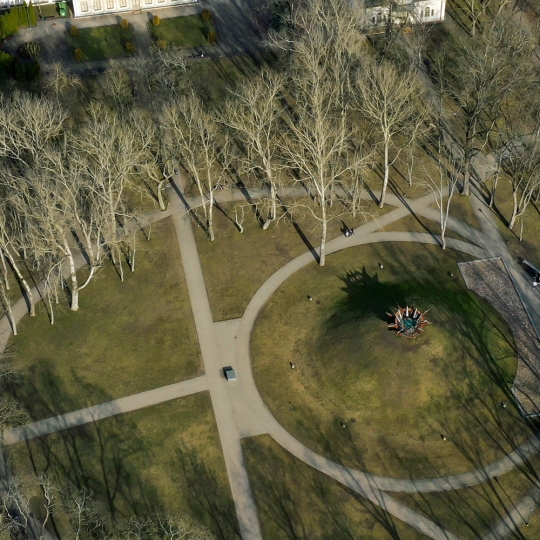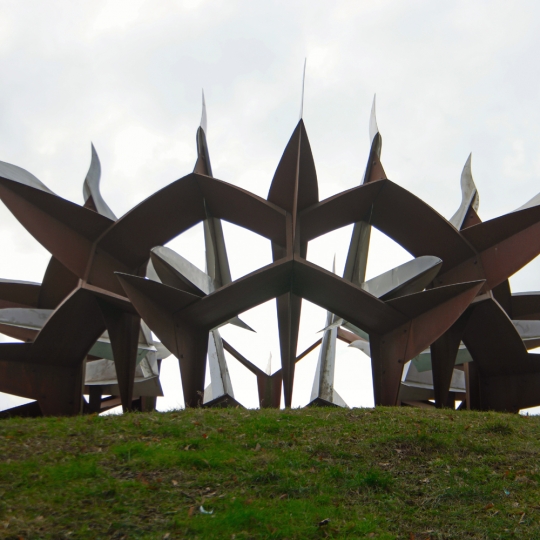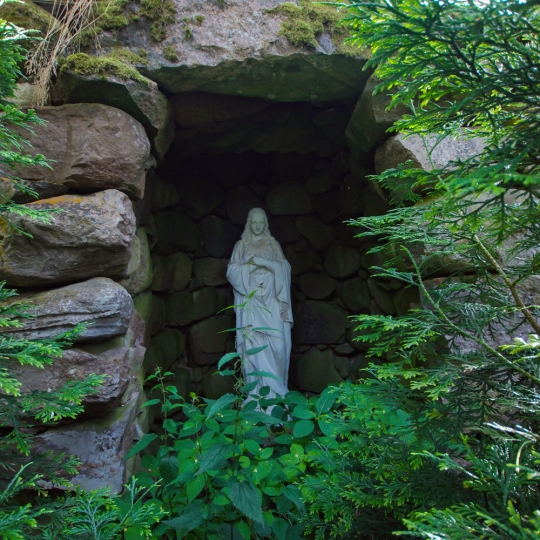Articles
The temples of Lithuanian manors still keeping the secrets of the past
2020 11 09Sacral buildings are often found at the manors. Catholic chapels and Orthodox churches would be built at the manors... according to the faith of the landowner at that time. Usually the manor temples would be small, intended for the needs of the noble family, but the residents of the area would often gather there to pray. Manor temples would often have mausoleums and representatives of the noble families would often be buried there. There are other buildings and places for believers at Lithuanian castles and manors that are still preserved or at least still mentioned.
Liubavas Angel is still standing at the former manor chapel-mausoleum
The chapel of Liubavas Manor was built in the 18th century, consecrated in 1741, it is recorded in the inventories of Nemenčinė Church. Later, in the middle of the 19th century, the chapel at Liubavas Manor was rebuilt in the neo-Gothic style, supposedly, according to the project of the then owner of the manor, the sculptor Rapolas Slizienis (1880−1881). After the historic events of 1863, the worship at this chapel was banned, and later, in 1874, it was renewed at the request of Gustavas Slizienis Sunday services would be held in this chapel until 1945, where the residents of the area, about 50-60 people, would gather on a Sunday morning. The driver of Slizieniai would bring the priest from Nemenčinė Church by car.
A chapel built in 1906 has been preserved in the park of Markučiai Manor
In the territory of Markučiai Manor you can visit St. Barbara’s (St. Varvara’s) Chapel. It was built on the hill of the park in 1906, when Markučiai Manor was managed by its last owners Varvara and Grigorijus Pushkin. Their remains rest in a cemetery next to the chapel. The chapel was built according to the project by the architect Michailas Prozorovas. This graceful building is decorated with restored icons painted on zinc tin, presumably created by Georgijus Molokinas, a 19th-20th century icon painter based in Vilnius.
There is an exhibition and concert hall in the old church of Jurbarkas Manor
An elegant brick church has survived at Jurbarkas Manor, where an exhibition and concert hall operates today. The Byzantine-style Church of the Transfiguration of Christ was built in the 19th century, in 1865, when the Jurbarkas Manor was ruled by the dukes Vasilčikov. At that time, the temple was decorated with the paintings by Viktor Vasnecov (taken to Ukraine during World War I), and it was not only the duke’s family but also the Orthodox community of Jurbarkas that would pray here.
The building of the Dominican monastery has survived to the present day in the territory of the castle of the Trakai peninsula
In 1779, the building on the site of the southwestern castle tower was supposed to be a church. Since 1789 its construction was supervised by the architect Martynas Knafus (c. 1740−1821). In 1822, the building was reconstructed into a monastery and a chapel. Today it houses museum expositions.
A chapel-columbarium stands in the memorial complex of Tuskulėnai Manor and Peace Park
The chapel of St. Teresa built in 1931 at Tuskulėnai Manor house complex has been preserved. The neoclassical style building was later renovated in 2005-2008. The entrance to the temple is framed by two massive pillars, there is an altar inside, and the walls are decorated with the little heads of angels.
In the complex of the Tuskulėnai Manor and the memorial to the victims of the occupation regime of the Soviet Union, there is a place of eternal rest for the victims of the Soviet totalitarian regime, there is a chapel-columbarium, built in 2004–2009. Architects Vytautas Edmundas Čekanauskas, Algirdas Umbrasas, sculptors Gediminas Karalius, Gitenis Umbrasas and others participated in the implementation of this project.
The stone grotto and the sculpture of the Blessed Virgin Mary have been preserved at Pienioniai Manor
Today, there is no chapel in the homestead of Pienioniai Manor, but the sacred cultural value has remained - the grotto and the sculpture of Virgin Mary. It is a grotto of a semicircular plan dating back to the first half of the 20th century, formed of stones. It has a concrete sculpture of Virgin Mary that is almost two meters high.
Temples that have survived in the territory of Raguvėlė Manor
A brick chapel-mausoleum, built in 1849, according to the project of the architect Laurynas Cezaris Anichinis, commissioned by the then nobles of the manor Komar family, has survived at Raguvėlė Manor. The neo-Gothic style, richly decorated chapel is located in the cemetery of Raguvėlė Manor. During the Soviet era, this building was badly damaged, and after Lithuania regained its independence, it was restored. Above the chapel door, the coat of arms of Komar is depicted on a red background, and the representatives of the Komar family are buried in the mausoleum under the building.
This chapel is not the only temple in the homestead of Raguvėlė Manor. The church of St. Deacon Stephen built in 1794−1796 also belongs to the Raguvėlė Manor. The construction of the church was founded by J. Komaras (1770−1847), the landowner of Raguvėlė. Later, in 1887, the renovated three-nave church was built in the Classicist style, next to it there are two bell towers, the eastern and the western, the examples of neoclassical architecture.

